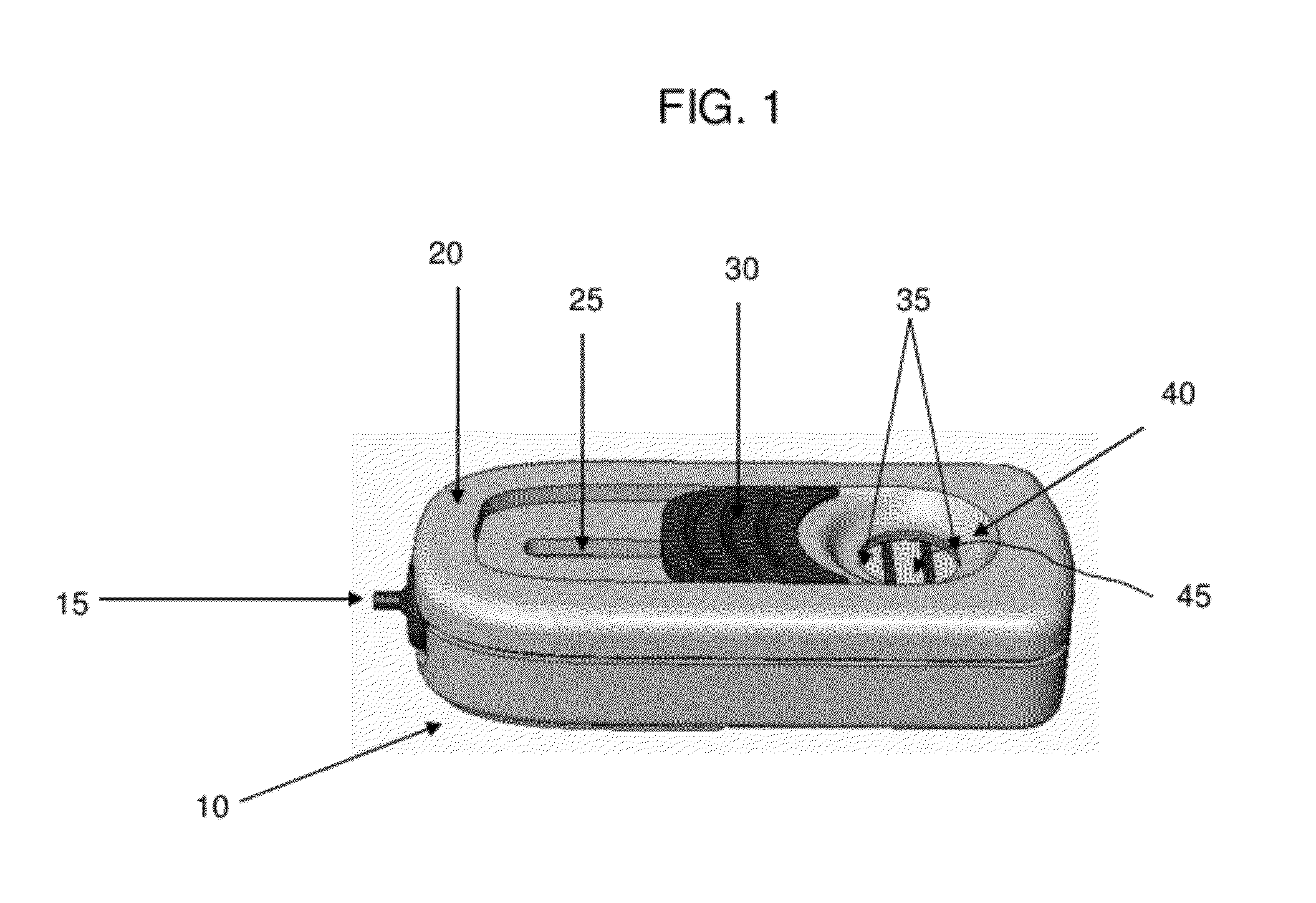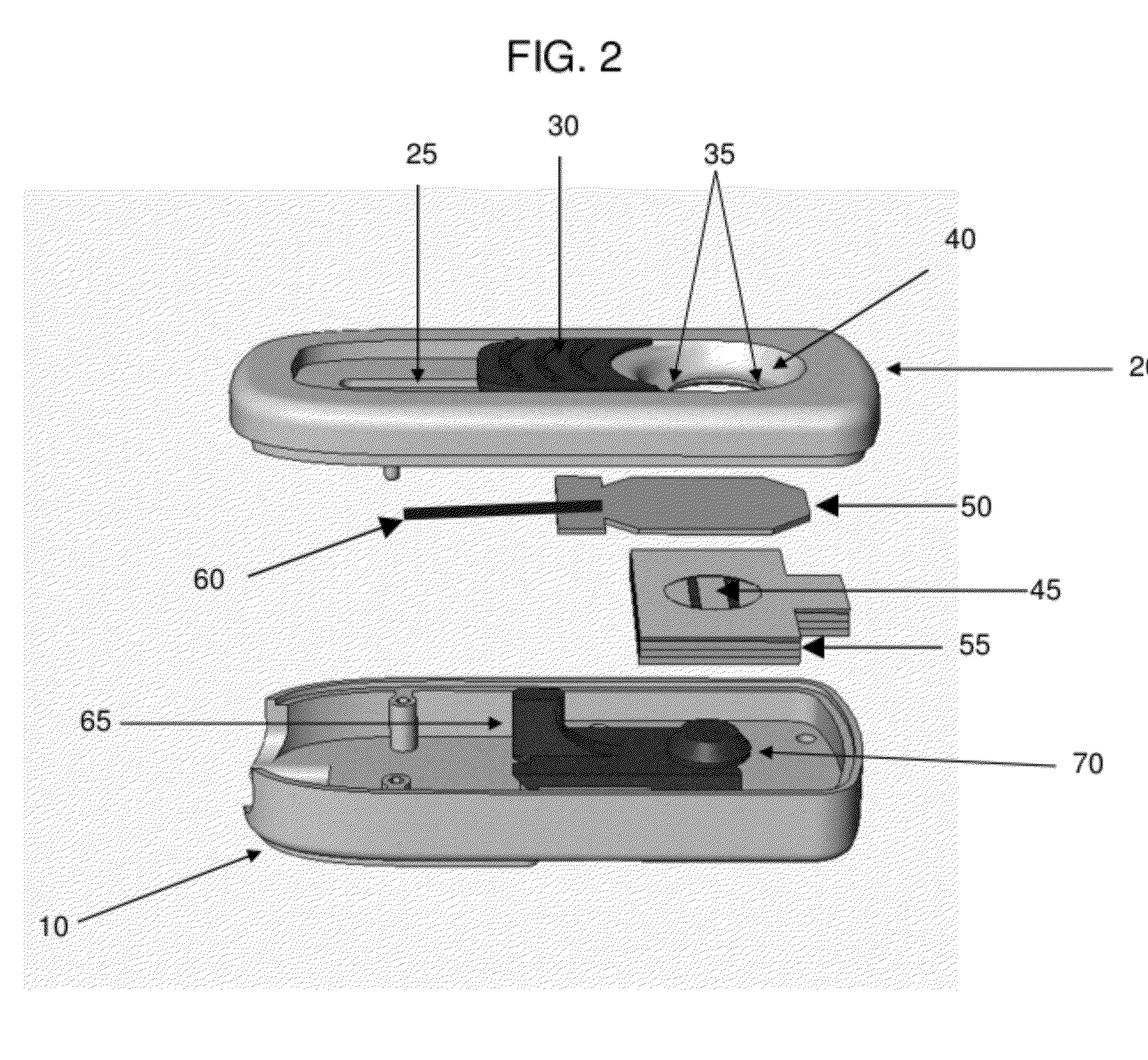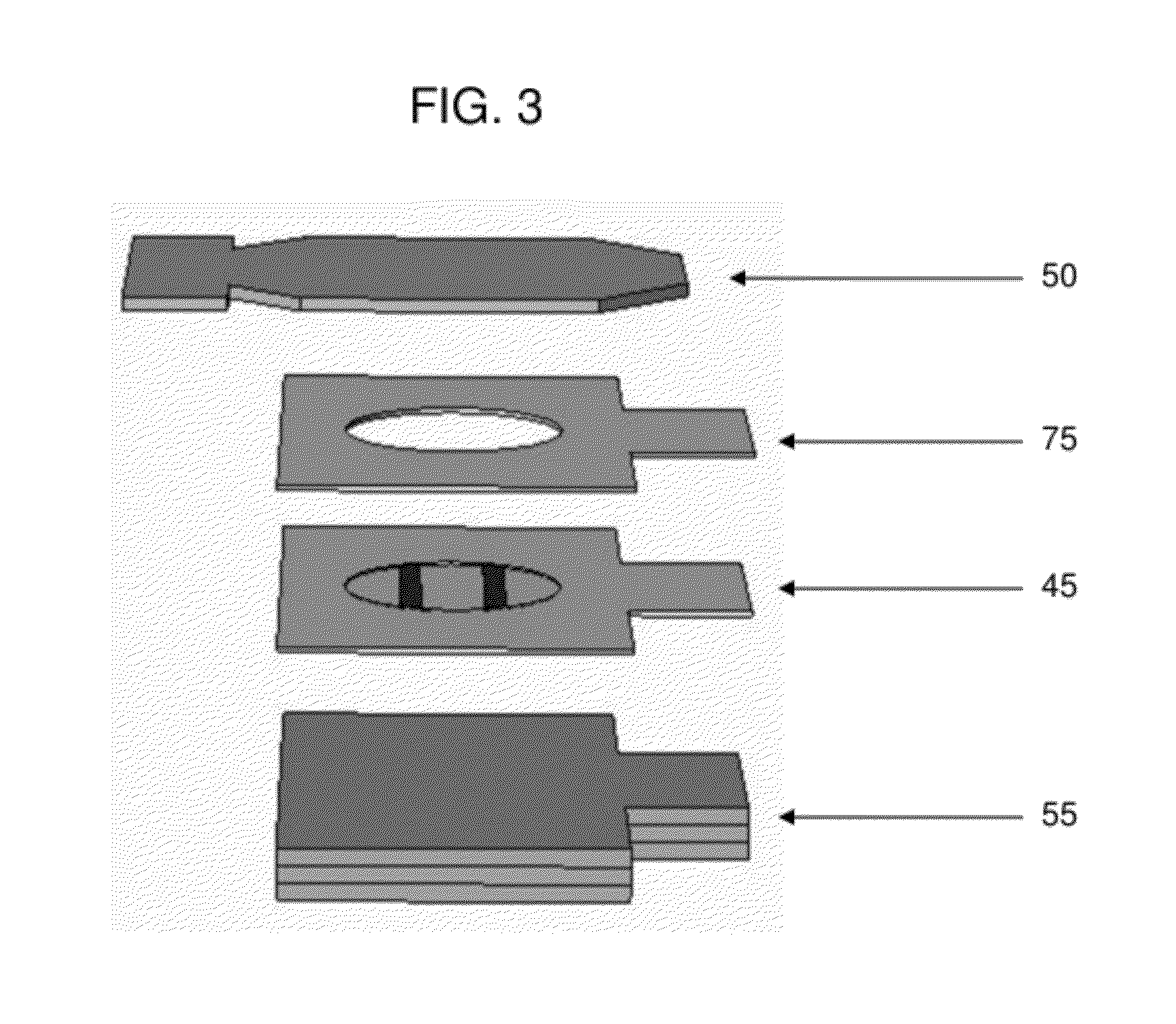Analyte Detection Devices, Multiplex and Tabletop Devices for Detection of Analyte, and Uses Thereof
analyte detection and tabletop technology, applied in the field of analyte detection devices, multiplex and tabletop devices for the detection of analyte, can solve the problem of food-borne infections still common
- Summary
- Abstract
- Description
- Claims
- Application Information
AI Technical Summary
Benefits of technology
Problems solved by technology
Method used
Image
Examples
example 1
[0263]Antibody specific for E. coli 0157:H7 conjugated to colloidal gold was baked and dried onto the conjugate pad. A second antibody specific for E. Coli 0157:H7 and an anti-antibody was striped onto a test membrane and assembled into an analyte detection device.
[0264]A sample containing LPS E. Coli 0157 was serially diluted in PBS to concentrations of 100 μg / ml, 50 μg / ml, 25 μg / ml, 12.5 μg / ml, 6.25 μg / ml, 3.125 μg / ml, 1.56 μg / ml, and 0.78 μg / ml. The samples were applied to the device to detect the presence of LPS E. Coli 0157. The experiments were graded based upon signal intensity and the results are shown below. PBS was used as a negative control. TL refers to the test line (analyte specific) and CL refers to the control line (non-analyte specific). The detection occurred within 30 to 60 seconds of application of the sample onto the conjugate pad. The device could detect the presence of a food borne analyte.
GradeSample ConcentrationTLCL 100 ug / ml68 50 ug / ml68 25 ug / ml48 12.5...
example 2
[0265]Evaluation of Species Specificity and Detection of E. coli 0157:H7, Campylobacter jejuni, and Salmonella enterica serovar Typhimurium in a device comprising 3 analyte detection membrane systems and a channel system. A multiplex assay was performed using a device comprising 3 analyte detection membrane systems and a channel system comprising 3 branches. The assay was performed to see if a single sample could be used to detect 3 different strains of bacteria, E. coli 0157:H7, Campylobacter jejuni subspecies jejuni, and Salmonella enterica serovar Typhimurium. The assay was performed with clinically relevant species of bacteria responsible for food-borne contamination and resulting illness in the United States in order to assess the specificity of the test for E. coli 0157:H7, Campylobacter jejuni subspecies jejuni, and Salmonella enterica serovar Typhimurium. An evaluation of the functionality of the test was also conducted during the assay to assess the device's ability to func...
example 3
[0267]Experiments demonstrated that a device comprising an analyte detection membrane system and force member, wherein the sample flows vertically through the analyte detection membrane system was able to distinguish between E. coli 0157:H7 ATCC 43895 and a non-pathogenic E. coli strain (Escherichia coli ATCC 29425). The device was able to detect E. coli 0157:H7 ATCC 43895 when combined with a non-pathogenic E. coli strain (representative of exposure to multiple microflora). The device demonstrated no cross reactivity to Escherichia coli ATCC 29425. The device demonstrated no cross reactivity even when in the presence of a 10 fold increase in concentration of the non-pathogenic Escherichia coli ATCC 29425. The device also showed no false negatives when tested against control samples and non-pathogenic E. coli ATCC 29425 strains. The devices exhibited a robust control line in the complete absence of a test line and were free of any background signal. The visual signal created when ex...
PUM
 Login to View More
Login to View More Abstract
Description
Claims
Application Information
 Login to View More
Login to View More - R&D
- Intellectual Property
- Life Sciences
- Materials
- Tech Scout
- Unparalleled Data Quality
- Higher Quality Content
- 60% Fewer Hallucinations
Browse by: Latest US Patents, China's latest patents, Technical Efficacy Thesaurus, Application Domain, Technology Topic, Popular Technical Reports.
© 2025 PatSnap. All rights reserved.Legal|Privacy policy|Modern Slavery Act Transparency Statement|Sitemap|About US| Contact US: help@patsnap.com



